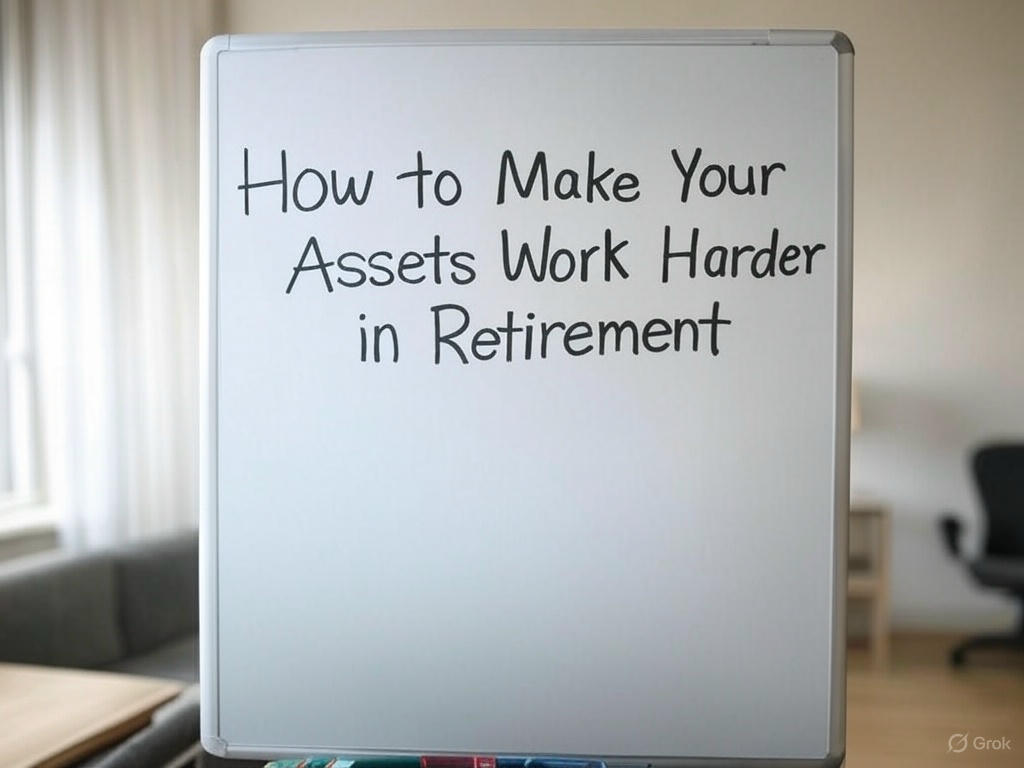Retirement is a time to relax, enjoy the fruits of your labor, and live life on your terms. However, it’s also a time when financial stability becomes even more critical. Ensuring your assets continue to grow and generate income is essential without a regular paycheck. The good news is that there are several strategies you can employ to make your assets work harder for you, ensuring that your retirement years are financially secure.
In this article, we will explore various approaches to optimizing wealth and enhancing financial position during retirement. From traditional investments to more innovative financial tools, these strategies can help you maximize your assets and generate a steady stream of income.
Leverage Your Investment Portfolio
Diversification is Key
Careful diversification is one of the most reliable ways to ensure your assets continue to work for you in retirement. By spreading your investments across various asset classes—stocks, bonds, real estate, and even alternative investments—you can mitigate risks while enhancing potential returns. In retirement, the focus should shift slightly from growth to stability and income generation. This can be achieved by allocating a portion of your portfolio to income-producing assets, such as dividend-paying stocks, bonds, or real estate.
Rebalance Regularly
Over time, your portfolio may drift away from its intended asset allocation due to market fluctuations. Regularly rebalancing your portfolio helps you maintain the risk level you are comfortable with and ensures that your assets align with your retirement goals. Rebalancing also presents an opportunity to capitalize on favorable market conditions, helping you to make the most of your assets.
Tap Into Real Estate
Rental Properties
Real estate is a popular asset class for many retirees because it can provide consistent cash flow. Owning rental properties can offer you the dual benefit of property value appreciation and rental income. If managed well, rental properties can be a reliable income stream, helping you maintain your desired lifestyle in retirement.
While owning real estate can require a significant upfront investment, it can pay off in the long term. It’s crucial to carefully select properties in locations with strong returns to maximize rental demand. Managing costs, such as maintenance and property taxes, is key to ensuring profitability.
Real Estate Investment Trusts (REITs)
Real Estate Investment Trusts (REITs) may be an excellent option for those who prefer a more hands-off approach to real estate investment. These companies own and operate income-producing real estate, offering retirees the chance to invest in real estate without the responsibilities of property management. REITs pay out a significant portion of their income to shareholders, making them a good choice for income generation.
Consider a Reverse Mortgage
If you own a home and are looking for a way to unlock the equity in your property without selling it, a reverse mortgage might be worth exploring. Reverse mortgages allow homeowners aged 62 or older to convert part of their home’s equity into a loan, with no monthly payments required. Instead, the loan is repaid when the homeowner sells the property, moves out, or passes away.
There are several types of reverse mortgages, each with different terms and conditions. The most common is the Home Equity Conversion Mortgage (HECM), insured by the Federal Housing Administration. Another option is a proprietary reverse mortgage, offered by private lenders and may allow homeowners to access more equity than HECM loans.
While reverse mortgages can provide a steady income stream, carefully weigh the pros and cons. Your home’s equity will decrease over time, and fees can be high. However, for some retirees, a reverse mortgage offers a viable way to supplement their income without selling or moving.
Explore Annuities
Annuities are a popular option for retirees seeking a guaranteed income stream. These financial products allow you to convert a lump sum into regular payments over time. There are various types of annuities, including fixed, variable, and indexed, each with different levels of risk and return.
Fixed Annuities
A fixed annuity provides predictable income payments, making it an attractive option for those who value stability. The payment amount is determined at the time of purchase and remains the same for the duration of the annuity contract.
Variable Annuities
Variable annuities allow you to invest in a selection of underlying assets, such as stocks and bonds, and the income payments fluctuate based on the performance of these investments. While they offer the potential for higher returns, they also come with more risk.
Indexed Annuities
Indexed annuities combine features of fixed and variable annuities. The returns are linked to a stock market index, like the S&P 500, but there is usually a cap on the returns. These annuities offer growth potential with some level of protection against market downturns.
Annuities can be particularly useful if you want to secure a predictable long-term income stream, helping to supplement Social Security benefits and other income sources.
Optimize Tax-Advantaged Accounts
In retirement, managing taxes becomes even more crucial. Fortunately, several tax-advantaged accounts can help you reduce your tax burden and make your assets work harder for you.
Traditional IRAs and 401(k)s
Traditional IRAs and 401(k)s allow you to defer taxes on your contributions and investment growth until you begin withdrawing funds in retirement. This tax-deferred growth can result in a significant accumulation of wealth over time. Be mindful of required minimum distributions (RMDs), which mandate withdrawals starting at age 73, to avoid penalties.
Roth IRAs and Roth 401(k)s
On the other hand, Roth IRAs and Roth 401(k)s allow for tax-free retirement withdrawals, provided you meet the requirements. While you won’t receive an upfront tax deduction for contributions, the potential for tax-free growth can be highly beneficial in retirement when your tax bracket may be lower.
Health Savings Accounts (HSAs)
Health Savings Accounts (HSAs) are another tax-advantaged vehicle that can help make your assets work harder. If you have a high-deductible health plan, you can contribute to an HSA and enjoy triple tax benefits: contributions are tax-deductible, growth is tax-free, and withdrawals for qualified medical expenses are tax-free. This makes HSAs a powerful tool for managing healthcare costs in retirement.
Minimize Debt
Debt is one of the biggest obstacles to financial freedom in retirement. High-interest debt, such as credit card balances or personal loans, can significantly erode your savings and income. Paying down or eliminating debt before retirement is essential to ensuring your income goes further.
Consider prioritizing the repayment of high-interest debts first and avoid taking on new debt in retirement. While it might not seem like an immediate way to make your assets work harder, eliminating debt will free up more of your income for savings and investment, giving your assets the chance to grow more efficiently.
Conclusion
Retirement is an opportunity to enjoy your life’s work and reap the benefits of your efforts. However, ensuring that your assets continue to support you during this time requires thoughtful planning and strategic management. By leveraging your investment portfolio, considering real estate opportunities, exploring reverse mortgages, and utilizing tax-advantaged accounts, you can create a robust financial strategy that will make your assets work harder for you.





